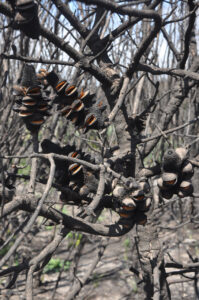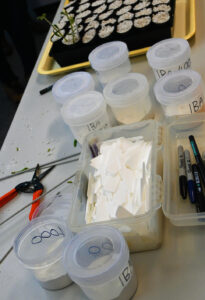
Phytohormones – an important list that keeps getting longer
By Dan Austin
When talking about plant hormones there are five big players that get exposure, but over the years, it has been discovered that there are many more and the roles they play within plants are nothing short of extraordinary.
Auxins, gibberellins, cytokinin, abscisic acid, and ethylene, and the role the molecules play in plants have long been researched. Auxins are perhaps the best-known group of plant hormones and the term auxin is used for any molecule that induces cell elongation. The most common of these found in plants, is indole acetic acid, which is known to stimulate cell elongation and cell division in cambium. It is also responsible for the phenomenon of apical dominance as it is most concentrated in apical shoots and reduces in concentration as it moves down through a plant. Auxins are valuable in propagation, to stimulate root initiation on stem cuttings and in tissue culture. However, indole acetic acid degrades too quickly to be practical for this use, so most rooting products contain the synthesised auxin, indole butyric acid.

While this is probably the most common use of auxins in horticulture, it is by no means the only use, and forms of auxin are also used to manipulate several popular crops. In America, forms of auxin are applied to flowers to stimulate fruit set in early season tomatoes and the auxin-type compound naphthalene acetamide has been used for years for chemically thinning apples and pears to produce a larger, more uniform and saleable product, and to mitigate problems with alternate bearing plants. Auxins are also used to suppress premature fruit drop in apple, pear, lemon, and grapefruit orchards, and in the case of 2,4-D and picloram, auxins display herbicidal properties.
The gibberellins are a family of phytohormones primarily responsible for stem elongation in plants. Gibberellic acid is the synthesised product most used in horticulture and is actually derived through the fermentation of the gibberella fungus. This product has long been utilised in propagation to break seed dormancy and reduce the need for vernalisation and stratification. As a plant growth regulator, gibberellic acid has many uses. It is used extensively on seedless grape varieties, where pre-bloom and bloom applications lead to increased fruit size and quality. Gibberellic acid application can also induce parthenocarpic fruit set on some pomes and citrus, which is invaluable if conditions have not allowed for adequate pollination. It is even used to delay fruit ripening and increase shelf life.
Along with the cytokinin group of phytohormones, auxins and gibberellins are regarded as plant growth promoters but naturally occurring phytohormones can also inhibit plant growth. The phytohormones abscisic acid and ethylene are prime examples.
Moving on from the big five well-known hormones, brassinosteroids have fascinating relationships with gravitropism, resistance to stress, and xylem differentiation. They also inhibit root growth and leaf abscission. Jasmonates and salicylic acid are two further groups of hormones that can be metabolised as volatile organic compounds which, as time goes on, are proving to be the ‘voice’ of plants. Through the release of volatile organic compounds, plants can signal insect predators when suffering a pest attack, and signal other plants to impending grazing so that plants downwind have time to concentrate unpalatable or toxic compounds in their tissues. Volatile organic compounds can even be used by plants to attract arbuscular mycorrhizae to assist them in the uptake of phosphorus!

Plant science has moved ahead in leaps and bounds and so have the products that offer synthesised plant growth regulators. Anti-transpirants, including abscisic acid, reduce stomatal opening and increase leaf resistance to water vapour diffusion without affecting carbon dioxide uptake. They are available for use to promote drought and salt resistance, as well as to reduce susceptibility to fungal pathogens.
Karrikins, while not produced by live plants, are a group of plant hormones that result when plant material is burnt. The seeds of many plant species that have evolved with bushfires have a germination response to karrikin exposure, and the group can now be seen synthesised in a variety of smoke-infused products including smoke water and smoke-infused vermiculite.
Growth suppressants, including trinexapac-ethyl, can give you that professional sports turf look, through reducing vertical growth by limiting the production of gibberellic acid. The increased lateral growth encourages thicker, denser lawn that requires less maintenance and is drought resistant. The same can be said for paclobutrazol for hedges and ornamentals.
These are just a few of the known phytohormones and their interactions in plants. Whether you use plant growth regulators or not, gaining an understanding of their functions within plants is fascinating and you’ll be a better horticulturist for it.
Did this article pique your interest? If so, consider joining IPPS, a global community of plant propagators that will have an answer to any horticultural challenge. Members are kept up to date on the latest in propagation with the Society’s full-colour newsletter, and the opportunity for discounted rates to annual national and international conferences. For more details visit https://aus.ipps.org/
Main photo: Plants grown in tissue culture can be induced to produce roots or shoots using auxins and cytokinins
